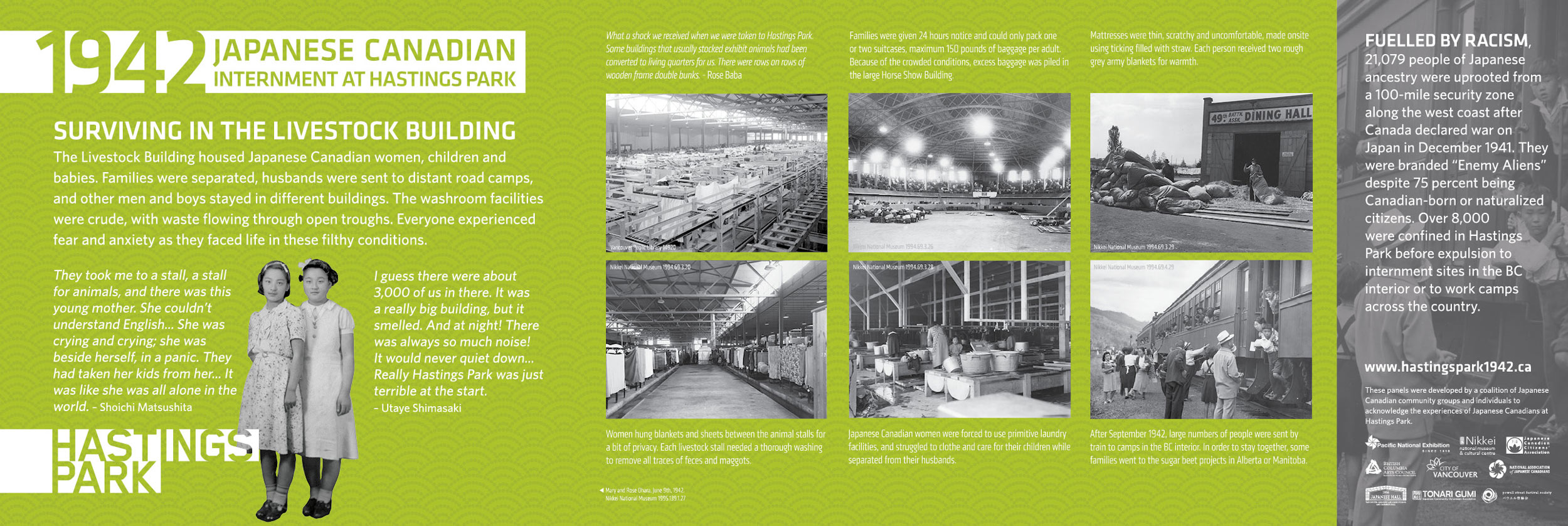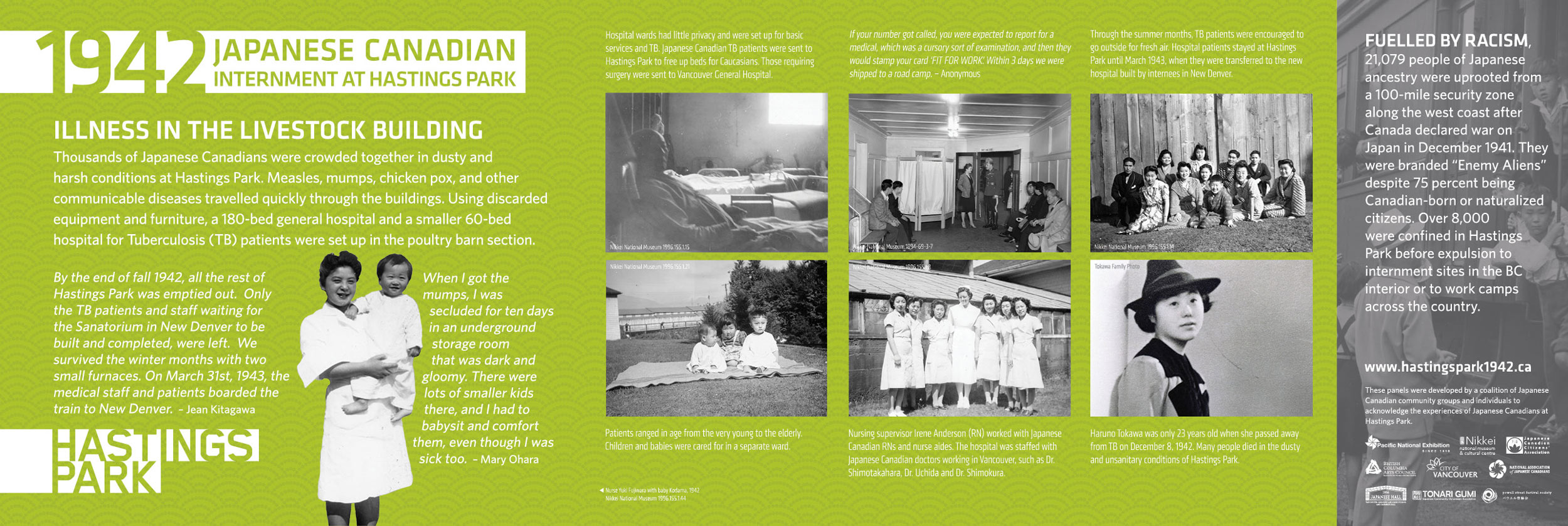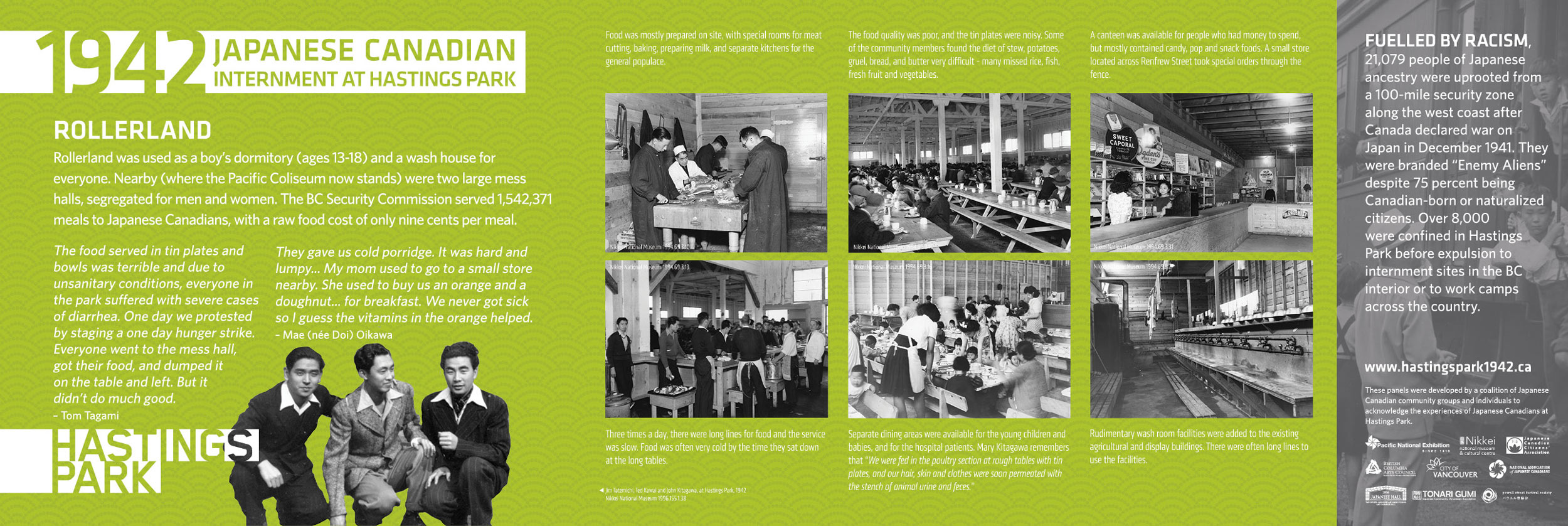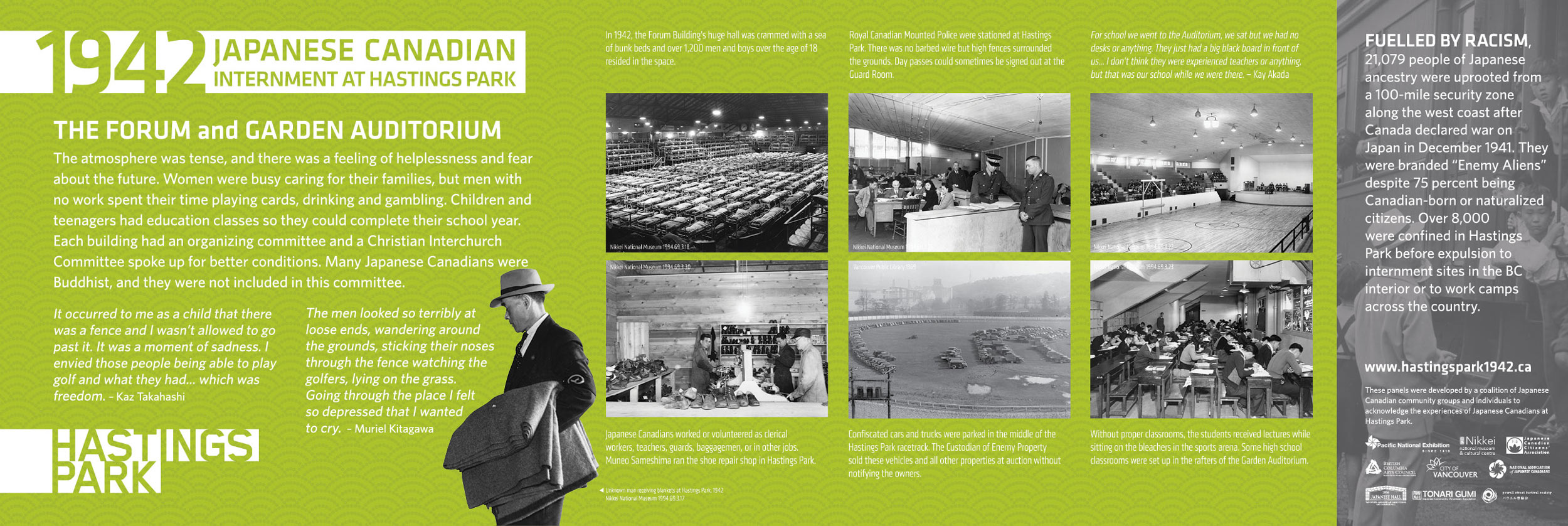Surviving in the Livestock Building
The Livestock Building housed Japanese Canadian women, children and babies. Families were separated, husbands were sent to distant road camps, and other men and boys stayed in different buildings. The washroom facilities were crude, with waste flowing through open troughs. Everyone experienced fear and anxiety as they faced life in these filthy conditions. EXPLORE
Illness in the Livestock Building
Thousands of Japanese Canadians were crowded together in dusty and harsh conditions at Hastings Park. Measles, mumps, chicken pox, and other communicable diseases travelled quickly through the buildings. Using discarded equipment and furniture, a 180-bed general hospital and a smaller 60-bed hospital for Tuberculosis (TB) patients were set up in the poultry barn section. EXPLORE
Rollerland
Rollerland was used as a boy’s dormitory (ages 13-18) and a wash house for everyone. Nearby (where the Pacific Coliseum now stands) were two large mess halls, segregated for men and women. The BC Security Commission served 1,542,371 meals to Japanese Canadians, with a raw food cost of only nine cents per meal. EXPLORE
The Forum And Garden Auditorium
The atmosphere was tense, and there was a feeling of helplessness and fear about the future. Women were busy caring for their families, but men with no work spent their time playing cards, drinking and gambling. Children and teenagers had education classes so they could complete their school year. Each building had an organizing committee and a Christian Interchurch Committee spoke up for better conditions. Many Japanese Canadians were Buddhist, and they were not included in this committee. EXPLORE




